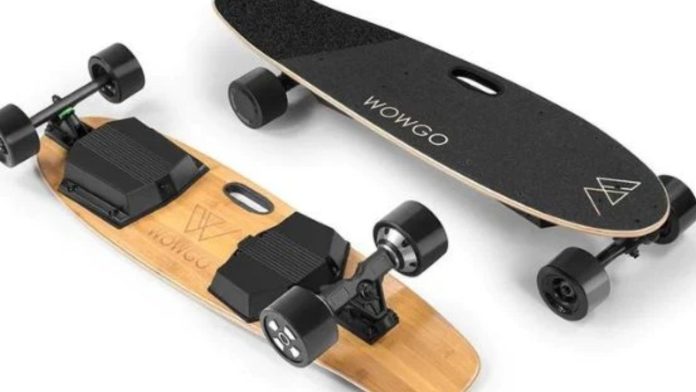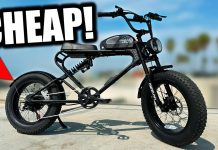An E-board is a skateboard with an electric motor for propulsion. It provides customers with a convenient and pleasurable mode of transportation for both work and play. An electric skateboard comes in a variety of sizes and configurations, but the most common type includes a deck that has a battery and motor mounted to the underside of it to power the board’s wheels.
Speed and ease of use are the two main benefits that electric skateboards offer over conventional skateboards. Electric skateboards, which have a maximum speed of 20 to 25 mph, are a faster and more efficient mode of transportation. They are also useful since they let riders travel farther with less effort because they eliminate the need for pushing.
Additionally, commuters are increasingly using electric skateboards because they are a more environmentally friendly option than cars and public transportation. Electric Skateboards are not toys; therefore, use caution when using them, especially when going fast. Never exceed the manufacturer’s recommended speed limits, and wear safety gear including a helmet at all times.
Factors Affecting the Working of Electronic Skateboard
Power and Battery Management
The capacity of the battery pack directly affects the skateboard’s range. Greater energy storage capacity in batteries enables the skateboard to go farther between charges. Skateboarders should pick a model whose battery life is appropriate for their daily commutes.
Charging cycles cause the health of batteries to decrease over time. For the battery to continue operating at its best, it must be regularly checked and replaced as needed.
Motor and Drivetrain
The engine’s torque and power determine how fast the skateboard can climb and accelerate. The skateboard can move quickly and climb steeper hills more easily thanks to its sturdy motors. The speed and torque of the skateboard are determined by the gear ratio between the engine and the wheels. Speeds increase with higher ratios, but acceleration and uphill climbing are made easier with lower ratios since they offer greater torque.
Wheels and Bearings
Wheel size and udometer (hardness) have an impact on the skateboard’s ride quality. Softer wheels offer more grip and stress absorption, while larger wheels make it easier to roll over cracks and bumps. Based on their desired riding style and terrain, riders select wheels. Superior bearings lessen friction, enabling unrestricted wheel rotation. Smooth-rolling bearings improve the skateboard’s overall performance and efficiency.
Electronic Speed Controller
Appropriate ESC tuning ensures responsiveness and precise speed control. Optimizing the skateboard’s performance involves calibrating the ESC based on the rider’s weight and preferences. For safe and accurate operation, the remote control and ESC must have a steady, interference-free signal. Accidents might result from interference or signal loss; thus, it is best to prevent them.
Terrain and Riding Conditions
The kind of terrain has a big effect on how well the skateboard performs. Rough or uneven pavement can affect speed, stability, and comfort, whereas smooth pavement offers the finest riding experience. Steep inclines affect speed and range because they demand more power from the motor. Likewise, cautious braking may be necessary when descending a slope to keep control and avoid collisions.
Rider Behavior and Skill Level
The motor and battery of a heavier rider are subjected to greater strain, which diminishes the skateboard’s range and acceleration. It is recommended that riders select a skateboard that fits their weight, as manufacturers often set weight limits.
Riding aggressively, accelerating quickly, and braking suddenly might shorten the battery’s lifespan and put more strain on its parts. Efficient and well-managed riding preserves energy and increases the longevity of the skateboard.
Summary
Electronic skateboard performance is the result of a complex interaction between several parts, user behavior, and outside variables. By being aware of these factors, riders may prolong the life of their electric skateboards, maximize their riding experience, and make well-informed decisions. Future technological advancements offer even more creative solutions that will improve the overall functionality and user experience of electronic skateboards.









